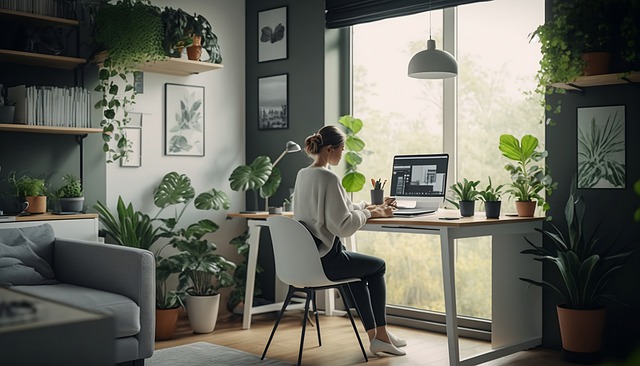 Planning one’s own house is a challenging project because it defines the living situation for several decades. The following are the five most common house planning mistakes and tips on how to avoid them.
Planning one’s own house is a challenging project because it defines the living situation for several decades. The following are the five most common house planning mistakes and tips on how to avoid them.
House planning yourself: Tips for avoiding planning mistakes
It’s fun to think about how to design the long-awaited dream home for the family in terms of room layout. The total freedom that one enjoys when planning the home of a home is one of the major advantages over rental properties.
Planning a house yourself gives building owners the opportunity to realize individual living concepts and to tailor the room layout perfectly to the needs of the residents. It is recommended to draw the floor plan and to think through different variants. But not only the planning of the floor plan should be carefully thought out, sources of error lurk in other phases of the house planning.
If you want to plan your own house, you should avoid mistakes in the following areas:
- Selection of the property
- Examination of all contracts
- Planning the floor plan
- Realistic assessment of own possibilities
- Lack of control of the construction progress
Already when selecting the property, it is important to pay attention to a variety of factors.
Selection of the property
Already when selecting the property, it is important to pay attention to a variety of factors:
- level, dry and solid ground
- no contaminated sites available
- direction
- extent of development
- Connection to the infrastructure
- no legal obstacles to the development
Also, the size of the property is an important factor and you should also see the development plan before buying the property. There are construction and distance limits noted, which determine in which area of the property may be built. If you are planning a bungalow with a large floor space, you should first make sure that this type of house is feasible on the selected property. Who plans a terraced house, must find partners who build the other terraced houses and then buy together a suitable plot.
In addition, a soil survey protects against expensive surprises. For example, a loamy soil can later cause the basement to be specially sealed. The costs amount to up to 60,000 euros, so that the entire calculation is endangered. Mistaken land purchase mistakes are hard to correct, so this step should be carefully considered. A supposedly cheap property, which causes high follow-up costs in retrospect, often turns out to be a costly bad buy.
Examination of all contracts
The audit of all contracts protects owners from premature decisions and legal disadvantages. The complicated building law is hard to see through laymen, therefore, you should be checked by a neutral expert before signing the contract under the contract.
In addition, builders should not be forced to conclude the house contract with the construction company due to temporary actions. With the conclusion of the house contract, you commit to a house type and structural changes are very difficult to realize, usually for a significant additional charge.
Many homeowners have the feeling after some time that the house itself was planned incorrectly and does not meet the requirements of the family.
Planning the floor plan
Many homeowners have the feeling after some time that the house itself was planned incorrectly and does not meet the requirements of the family. The main reason for this problem is that the floor plan of the house is not oriented to the fact that the usage requirements change over time. If you want to plan your own house, you should take into account that after a few years, children will move out and start thinking about how to use it after the family phase.
When planning the floor plan, the following factors should be considered:
- sufficiently large hall or entrance area
- Orientation of the living spaces
- traffic areas
- Window surfaces in the living room
- Rooms are assigned unfavorably
- missing guest toilet
- Bathroom impractical
- low knee-length
- lack of daylight in the attic
- too narrow stairs
- Doors wrongly planned
Problems with the open kitchen
Many homeowners have the feeling after some time that the house itself was planned incorrectly and does not meet the requirements of the family.
Sufficient large hallway or entrance area
Too narrow a dimensioned entrance area is extremely impractical and leads to conflicts again and again, when several people have to leave the house at the same time. There is also a lack of space in a narrow entrance area for a cloakroom or a shoe cabinet, and this proves to be unfavorable every day.
Orientation of the living spaces
The orientation of the living spaces determines whether the living area looks bright and spacious. North-facing living and children’s rooms are unfavorable, because the lack of natural daylight is perceived as particularly disadvantageous in these rooms. The entrance area should be placed on the north side of the house, whereas living spaces should face south or west. With the optimal alignment of the living spaces, heating energy is saved and the cost of lighting is reduced.
Traffic areas
To plan generously corridors (except those in the entrance area), consuming expensive living space. Long hallways only make sense if they want to consciously separate an area of the house, for example a home office.
Window surfaces in the living room
Large windows give the living room brightness and make it appear spacious. When dimensioning the windows, however, it should be noted that there is enough space for furniture.
Rooms are assigned unfavorably
In order to facilitate the domestic activities, the kitchen should be placed close to the entrance, as this saves the hauling of the shopping through the house. Instead of a basement, a pantry and a utility room next to the kitchen prove to be beneficial and also cause much lower construction costs.
Missing guest toilet
A guest toilet is indispensable especially for a family of several and should therefore be taken into account, if you want to plan your own house.
Bathroom impractical
In the bathroom partition walls for furniture and shelves are very important. A second washbasin proves to be useful, because it avoids bottlenecks when several family members have to leave the house at the same time. Very practical are bathroom doors that can be opened to the outside, because this increases the usable area in the bathroom. Single-storey shower cubicles are an investment that pays off in old age.
Low knee-height The height of the knee-stick and the associated roof pitch are essential planning aspects. The steeper the roof and the higher the knee-stick, the more usable living space is available in the attic. A knee-length of more than 100 centimeters is particularly advantageous, because then you have almost two full floors available.
Lack of daylight in the attic
Dormers and skylights bring daylight into the attic. High-set, wide towed dormers also provide more freedom of movement and a generous sense of space.
Too narrow stairs
Very narrow stairs or spiral staircases pose a risk of accidents and can not later be equipped with a stairlift. Stairs from the living room to the upper floor mean that parents are disturbed every time children go up to their room. This can be more than annoying in teenage years, even if friends are still in tow.
Door improperly planned
Doors should be wide enough and should also be struck to the right side to avoid permanent furniture backs when opening the door in question. A door leading from the kitchen to the garden is very beneficial.
Problems with the open kitchen
An open kitchen is communicative and especially popular with young families. It is less pleasant that kitchen odors and disorder are permanently present in the living area. A compromise is flexible partitions, which even allow a very good noise insulation.
If you want to plan a development house yourself, you should first inquire exactly how extensive the trades are, which you take on in-house.
Realistic assessment of own possibilities
The own possibilities assess realistically, is a key success factor if you want to plan his house itself. On the one hand, this concerns the financial framework, which should include reserves for unplanned expenses, replacement of kitchen appliances, car repairs and the design of the outdoor area.
Closely related to this is the assessment of which own contributions can be made to save construction costs. If you want to plan a development house yourself, you should first inquire exactly how extensive the trades are, which you take on in- house. Often work packages such as the insulation of the house are taken over by the client in a development house. It should be noted that there are certain requirements for the insulation, about which one should inquire exactly, so that the result is satisfactory.
We recommend a concurrent calculation, in which it is checked again and again whether one is still within the framework. Anyone who evaluates his craftsmanship too optimistically and eventually has to hire a professional craftsman will almost certainly be in financial distress because of the unplanned costs.
Lack of control of the construction progress
If you want to plan your own house, should consider controls. In order to keep to the set time frame, one must continuously control the construction progress. Especially if you assign the individual trades to different companies instead of working together with a construction company, the coordination effort is high.
If a product is delayed, the entire time schedule gets confused. If the construction of the house is delayed, but the apartment has already been terminated, builders are in shortage of time. The resulting stress is not to be underestimated and unfortunately often leads to a serious crisis in the partnership.
Building a house is an extensive project that requires a multitude of influencing factors.
Planning a house yourself: From drawing the floor plan to acceptance
Building a house is an extensive project that requires a multitude of influencing factors. Basic planning errors can only be corrected afterwards with considerable expense. It always makes sense to get expert advice during the individual planning steps. This concerns the design of the floor plan, the financial planning and the control of the construction progress.
Engaging a construction consultant protects builders from overlooking poor construction work. With such a supervisory authority, the danger of drastically reducing building defects only after acceptance has been reduced. Forgoing experts is the biggest mistake you can make when planning your own home – no matter if it’s a terraced house, a development house or a townhouse.


